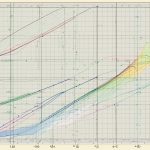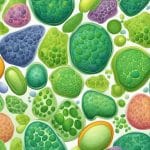Types Of Reactions in Chemistry
Chemical reactions are the backbone of chemistry, and understanding the different types of reactions is essential for students to have a solid foundation in the subject. There are several types of reactions, each with its unique characteristics and outcomes. Some reactions involve the transfer of electrons, while others involve the formation or breaking of chemical bonds.
Basic reaction types include combination, decomposition, single-replacement, double-replacement, and combustion reactions. Combination reactions occur when two or more reactants combine to form a single product. Decomposition reactions involve the breakdown of a single reactant into two or more products. Single-replacement reactions occur when one element replaces another in a compound, while double-replacement reactions involve the exchange of ions between two compounds. Combustion reactions involve the reaction of a fuel with oxygen to produce heat and light.
Understanding the characteristics of chemical reactions is also crucial. These include factors such as reaction rates, energy changes, and equilibrium. Additionally, reaction outcomes can be affected by factors such as temperature, pressure, and the concentration of reactants and products.
Key Takeaways
- Chemical reactions are essential to the study of chemistry, and understanding the different types of reactions is crucial.
- Basic reaction types include combination, decomposition, single-replacement, double-replacement, and combustion reactions.
- Characteristics of chemical reactions include reaction rates, energy changes, and equilibrium, and outcomes can be affected by factors such as temperature, pressure, and concentration.
Basic Reaction Types

Chemical reactions are fundamental to our understanding of the world around us. The different types of chemical reactions can be classified based on the nature of the reactants, the products formed, and the underlying mechanisms. In this section, we will explore the five basic types of chemical reactions.
Synthesis Reactions
Synthesis reactions, also known as combination reactions, involve the formation of a single compound from two or more reactants. The general equation for a synthesis reaction is:
A + B ‚Üí AB
Where A and B are elements or compounds. One common example of a synthesis reaction is the formation of water from hydrogen and oxygen:
2H2 + O2 ‚Üí 2H2O
Decomposition Reactions
Decomposition reactions involve the breakdown of a single compound into two or more products. The general equation for a decomposition reaction is:
AB ‚Üí A + B
Where AB is a compound. One common example of a decomposition reaction is the breakdown of hydrogen peroxide into water and oxygen:
2H2O2 ‚Üí 2H2O + O2
Single Displacement Reactions
Single displacement reactions, also known as substitution reactions, involve the replacement of one element in a compound by another element. The general equation for a single displacement reaction is:
A + BC ‚Üí AC + B
Where A is an element and BC is a compound. One common example of a single displacement reaction is the reaction between zinc and hydrochloric acid:
Zn + 2HCl ‚Üí ZnCl2 + H2
Double Displacement Reactions
Double displacement reactions, also known as metathesis reactions, involve the exchange of ions between two compounds. The general equation for a double displacement reaction is:
AB + CD ‚Üí AD + CB
Where AB and CD are compounds. One common example of a double displacement reaction is the reaction between silver nitrate and sodium chloride:
AgNO3 + NaCl ‚Üí AgCl + NaNO3
Combustion Reactions
Combustion reactions involve the reaction of a substance with oxygen to produce heat and light. The general equation for a combustion reaction is:
CmHn + (m + n/4)O2 ‚Üí mCO2 + (n/2)H2O
Where CmHn is a hydrocarbon. One common example of a combustion reaction is the burning of methane:
CH4 + 2O2 ‚Üí CO2 + 2H2O
In conclusion, understanding the different types of chemical reactions is essential to our understanding of the world around us. By knowing the basic reaction types, we can predict the products of a reaction and understand the underlying mechanisms.
Chemical Reaction Characteristics
Chemical reactions are processes that involve the transformation of one or more substances into new substances. They are characterized by the breaking and formation of chemical bonds. There are many different types of chemical reactions, each with its own unique characteristics. In this section, we will explore some of the most common types of chemical reactions, including precipitation reactions, acid-base reactions, and redox reactions.
Precipitation Reactions
Precipitation reactions are a type of chemical reaction that occurs when two aqueous solutions are mixed together and a solid precipitate forms. This occurs when the product of the reaction is insoluble in water. The precipitate can be identified by its cloudy appearance and can be separated from the solution via filtration.
Acid-Base Reactions
Acid-base reactions are a type of chemical reaction that occurs when an acid and a base are mixed together. This results in the transfer of a proton (H+) from the acid to the base, resulting in the formation of a salt and water. The reaction is also known as neutralization.
Redox Reactions
Redox reactions are a type of chemical reaction that involves the transfer of electrons between two species. This can occur through the process of oxidation (loss of electrons) or reduction (gain of electrons). Redox reactions are important in many biological processes, such as cellular respiration and photosynthesis.
Overall, chemical reactions are an important aspect of chemistry. Understanding the different types of reactions and their characteristics is crucial for predicting the products of a reaction and for designing new chemical processes.
Reaction Conditions and Outcomes
Exothermic and Endothermic Reactions
The reaction conditions play a vital role in determining the type of reaction that occurs. One of the most important factors that affect the outcome of a reaction is the heat or energy involved. When a reaction releases heat or energy, it is known as an exothermic reaction. On the other hand, when a reaction absorbs heat or energy, it is known as an endothermic reaction.
In exothermic reactions, the energy released is usually in the form of heat. This heat can be used to drive other reactions or processes. For example, combustion reactions are exothermic reactions that release heat and light. They are used to power engines and generate electricity.
In endothermic reactions, the energy absorbed is usually in the form of heat. This heat is absorbed from the surroundings, causing a drop in temperature. Endothermic reactions are often used in refrigeration and air conditioning systems.
Reversible and Irreversible Reactions
Another important factor that affects the outcome of a reaction is whether it is reversible or irreversible. In reversible reactions, the products of the reaction can react with each other to form the original reactants. The reaction can go back and forth between the reactants and products.
In contrast, irreversible reactions only proceed in one direction. Once the products are formed, they cannot react with each other to form the original reactants.
Equilibrium is a state in which the rates of the forward and reverse reactions are equal. In reversible reactions, the reaction can reach equilibrium. At equilibrium, the concentrations of the reactants and products remain constant.
Irreversible reactions, on the other hand, do not reach equilibrium. The reaction proceeds until all of the reactants are consumed, and the products are formed.
Understanding the reaction conditions and outcomes is essential for predicting the products of a chemical reaction. By knowing whether a reaction is exothermic or endothermic, and whether it is reversible or irreversible, chemists can determine the conditions needed to drive the reaction in the desired direction.
Stoichiometry and Reaction Equations
Balancing Chemical Equations
In chemistry, a chemical equation is a symbolic representation of a chemical reaction. It shows the reactants, products, and their respective quantities. A balanced chemical equation is one where the number of atoms of each element in the reactants is equal to the number of atoms of the same element in the products. This means that the law of conservation of mass is obeyed, which states that matter cannot be created or destroyed.
Balancing a chemical equation involves adjusting the coefficients of the reactants and products to achieve balance. This is done by using the mole concept and stoichiometry. The mole concept is used to convert between the mass of a substance and the number of particles it contains. Stoichiometry is used to calculate the amounts of reactants and products involved in a chemical reaction.
Mole Concept and Calculations
The mole is a unit of measurement used in chemistry to express amounts of a chemical substance. It is defined as the amount of a substance that contains the same number of entities (such as atoms, molecules, or ions) as there are atoms in 12 grams of carbon-12. This number is known as Avogadro’s number and is approximately 6.022 x 10^23.
Stoichiometry is the study of the quantitative relationships between reactants and products in a chemical reaction. It is based on the law of conservation of mass, which states that the mass of the reactants is equal to the mass of the products. Stoichiometry involves using balanced chemical equations to calculate the amounts of reactants and products involved in a chemical reaction.
Chemical formulas are used to represent the composition of compounds and molecules. They show the elements that make up a compound and the ratio of atoms of each element in the compound. For example, the formula for water is H2O, which means that each molecule of water contains two hydrogen atoms and one oxygen atom.
In conclusion, stoichiometry and reaction equations are important concepts in chemistry. They allow chemists to predict the amounts of reactants and products involved in a chemical reaction and to ensure that the law of conservation of mass is obeyed. Balancing chemical equations and using the mole concept and stoichiometry are essential skills for any student of chemistry.
Advanced Reaction Types
Electrochemical Reactions
Electrochemical reactions involve the transfer of electrons between species. These reactions are important in many areas, including the production of electricity in batteries and the extraction of metals from ores. In an electrolysis reaction, an electrical current is used to drive a non-spontaneous redox reaction. This process is used to produce a variety of chemicals, including chlorine gas, hydrogen gas, and aluminum metal.
Organic Reaction Mechanisms
Organic reactions are those that involve carbon-based compounds. These reactions can be classified into a variety of categories, including addition reactions, elimination reactions, and substitution reactions. Isomerization reactions are another important type of organic reaction. In these reactions, the structure of a molecule is rearranged, resulting in a different isomer.
Hydrolysis Reactions
Hydrolysis reactions involve the breaking of chemical bonds using water. These reactions are important in many areas, including the breakdown of carbohydrates, proteins, and nucleic acids in the body. In a hydrolysis reaction, a water molecule is used to break a covalent bond, resulting in the formation of two new compounds.
Redox Reactions
Redox reactions involve the transfer of electrons between species. These reactions are important in many areas, including the production of electricity in batteries and the extraction of metals from ores. In a redox reaction, one species is oxidized (loses electrons) while another species is reduced (gains electrons). These reactions are used in a variety of applications, including the production of chemicals and the treatment of wastewater.






